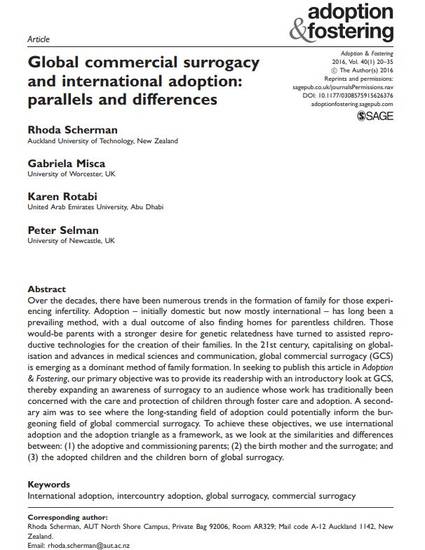
Article
Global commercial surrogacy and international adoption: parallels and differences
Adoption & Fostering
(2016)
Abstract
Over the decades, there have been numerous trends in the formation of family for those experiencing infertility. Adoption – initially domestic but now mostly international – has long been a prevailing method, with a dual outcome of also finding homes for parentless children. Those would-be parents with a stronger desire for genetic relatedness have turned to assisted reproductive technologies for the creation of their families. In the 21st century, capitalising on globalisation and advances in medical sciences and communication, global commercial surrogacy (GCS) is emerging as a dominant method of family formation. In seeking to publish this article in Adoption & Fostering, our primary objective was to provide its readership with an introductory look at GCS, thereby expanding an awareness of surrogacy to an audience whose work has traditionally been concerned with the care and protection of children through foster care and adoption. A secondary aim was to see where the long-standing field of adoption could potentially inform the burgeoning field of global commercial surrogacy. To achieve these objectives, we use international adoption and the adoption triangle as a framework, as we look at the similarities and differences between: (1) the adoptive and commissioning parents; (2) the birth mother and the surrogate; and (3) the adopted children and the children born of global surrogacy.
Keywords
- International adoption,
- intercountry adoption,
- global surrogacy,
- commercial surrogacy
Disciplines
Publication Date
2016
DOI
10.1177/0308575915626376
Citation Information
Rhoda Scherman, Gabriela Misca, Karen Rotabi and Peter Selman. "Global commercial surrogacy and international adoption: parallels and differences" Adoption & Fostering Vol. 40 Iss. 1 (2016) p. 20 - 35 Available at: http://works.bepress.com/karen-rotabi/38/
